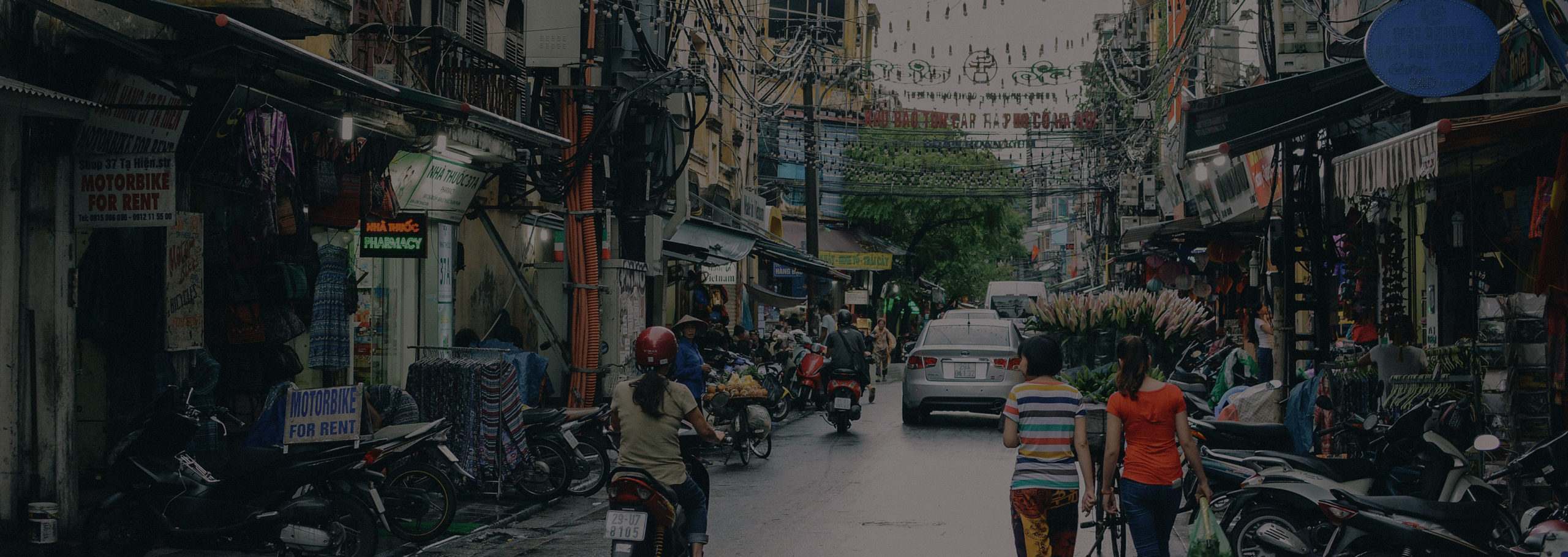
Hanoi
Hanoi is Vietnam's capital and second largest city by population. It is sometimes dubbed the "Paris of the East" for its French influences. With its tree-fringed boulevards, more than two dozen lakes and thousands of French colonial-era buildings, Hanoi is a popular tourist destination.
First impressions of Hanoi.
Further impressions of Hanoi.
Approaching the Dong Kinh Nghia Thuc Square.
Old Quarter
I stayed in Old Quarter, the heart and historical epicentre of action around the lake of Ho Hoan Kiem. This area is bustling with shops, bars, entertainment and lots of traffic. You can lose yourself walking around in the crowded streets which is the first thing I did after settling down in the hostel.
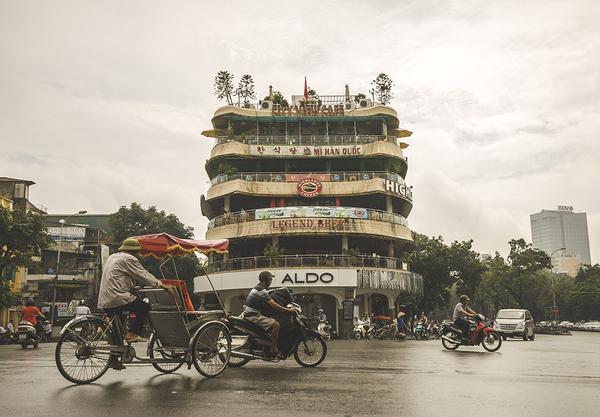
Remarkable building at Dong Kinh Nghia Thuc Square.
There’s lots of picturesque landmarks you can find in the Old Quarter. Drink a coffee at Dong Kinh Nghia Thuc Square. You’ll find there the legend beer in a curiously looking building with a nice view over the square and the neighbouring lake.
From there you can walk along the lake towards the Ngoc Son temple, a complex of buildings on a little island on the lake. To get there cross the red bridge and enjoy the temple with its lovely pagoda, a place to relax at. From a distance and any direction you’ll see the turtle tower on a little patch of land arising from the water on the opposite site.
From the western part of the lake it’s not far away to St. Joseph’s cathedral, the city's oldest church that looks similar to Notre Dame in Paris. It’s a great place for tourists with a small square right in front of the cathedral. On the side of the square I found the Chien hostel with a rooftop bar. I asked at the reception and could go up and from the very top capture the view of the cathedral and the nearby surroundings. I really recommend that area to stay at if you come to visit Hanoi.
A 10 minute walk away to the north from the lake you can visit the Quan Chuong City Gate, an 18th century city gate and watch tower. To be honest, I thought this to be bigger and more exciting than it was. Perhaps I expected a big palace ruin or something. But it was basically just a section of some old walls. Nice to see if you stroll around, but I wouldn’t plan my day around it to see it at all costs. But still, a nice bonus place to visit. Btw. I lost a control button from my camera rig while walking around that area. That’s why I remember the place more clearly than I perhaps normally would.
Dong Kinh Nghia Thuc Square.
Enjoying the Dong Kinh Nghia Thuc Square.
On the streets of Hanoi (commentary 1).
On the streets of Hanoi (commentary 2).
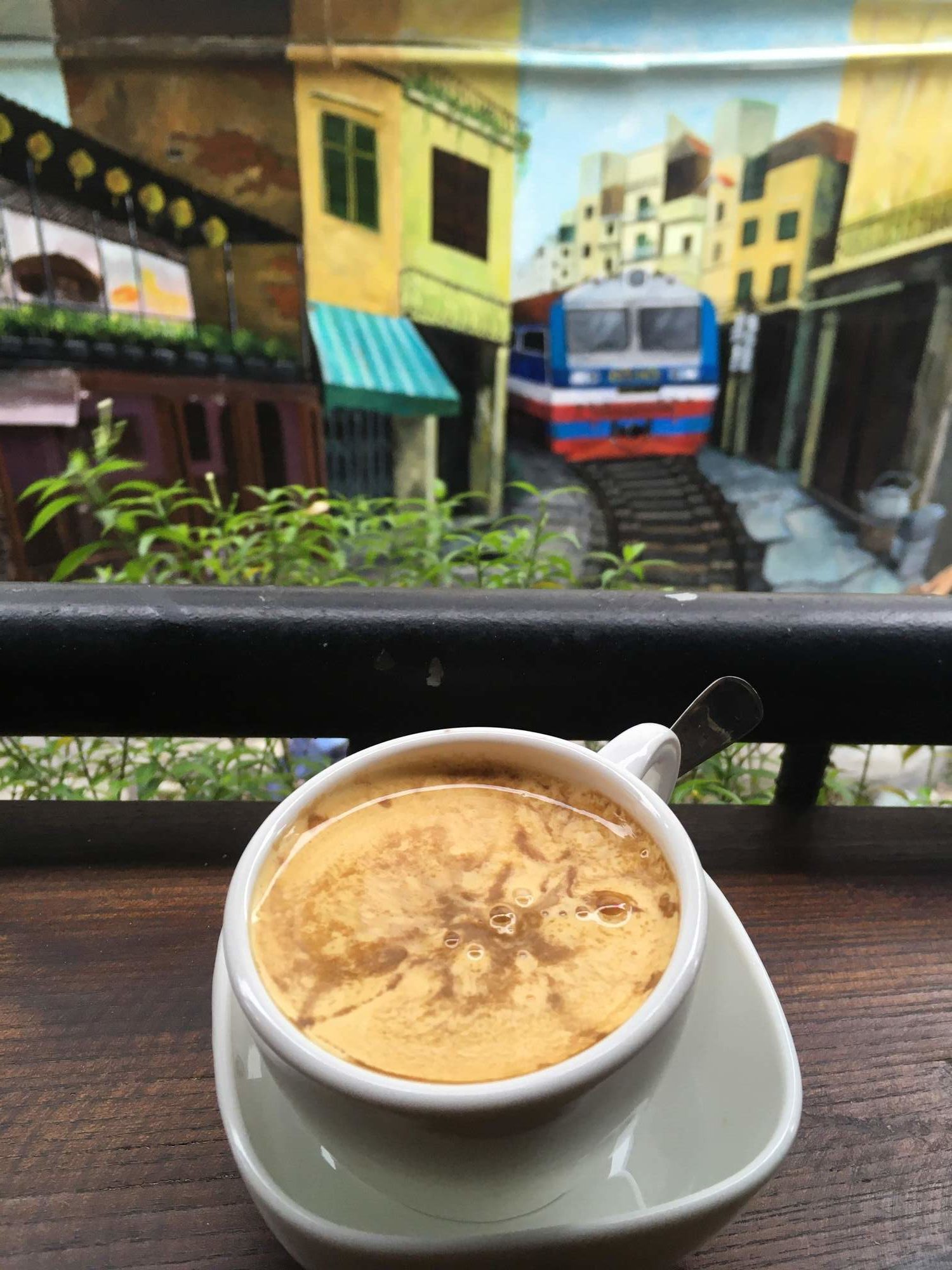 Egg coffee at the cafe A99.
Egg coffee at the cafe A99.
Train Street
A major attraction in Hanoi is the railway that goes through the city centre between very narrow and small streets. Residents have literally trains running past their door steps a few times during the day. And it has become a sort of an attraction for tourists as the residents in some spots can offer food and refreshment on rails during the hours before a train passes. I’ve been at least to two such spots. One was the cafe A99 on the western edge of the Old Quarter, a very lovely spot with an upper floor overlooking the rails right opposite a gorgeous and colourful mural. I’d say it’s a little secret place where to sit, relax and have a delicious egg coffee.
Another one was south of the central station Ga Ha Noi. It took a while to get there on foot, but it was worth it. I sat there with some fellow backpackers and we enjoyed the great local street scenery sitting comfortably on rails, just hanging out and enjoying being lost in this very special city.
You can find a few other spots throughout the city where you can walk on rails, but some of them are already closed to trespassers. I can easily imagine many reasons for doing that, so that’s okay. Safety and peace for the residents should have priority.
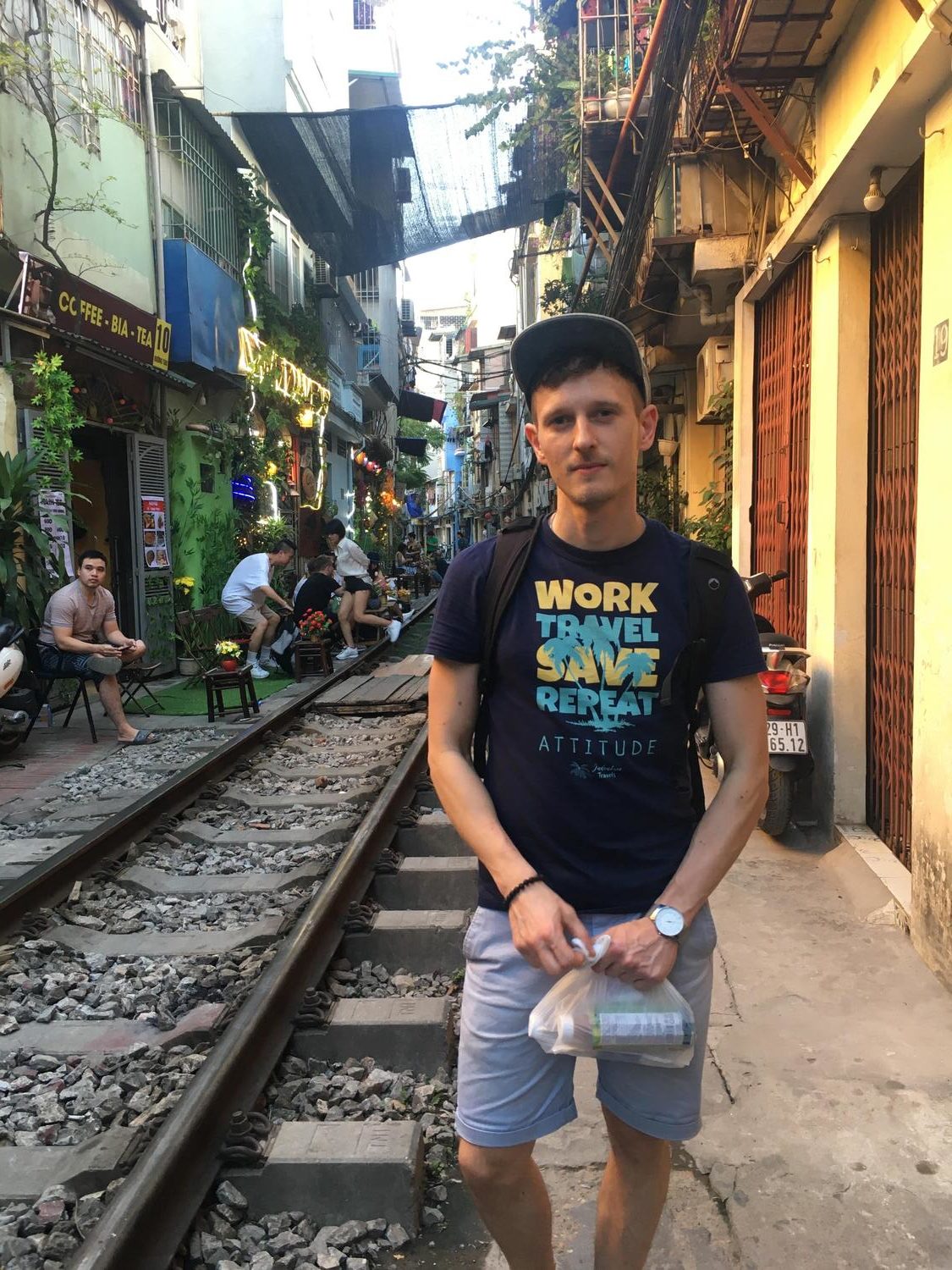 Enjoying the relaxed, urban vibes of the Train Street.
Enjoying the relaxed, urban vibes of the Train Street.
Mausoleum & City Park
What you shouldn’t miss while visiting Hanoi is the Ho Chi Minh mausoleum, the last resting place of the key figure of the modern republic of Vietnam which politically and ideologically is a communist country. The mausoleum is surrounded by a big park in which you could spend some time relaxing. You cannot take pictures inside the mausoleum itself. It’s heavily guarded by soldiers in white uniforms. But you can definitely catch a glimpse of Ho Chi Minh solemnly lying in state. The mental picture will stay with you forever.
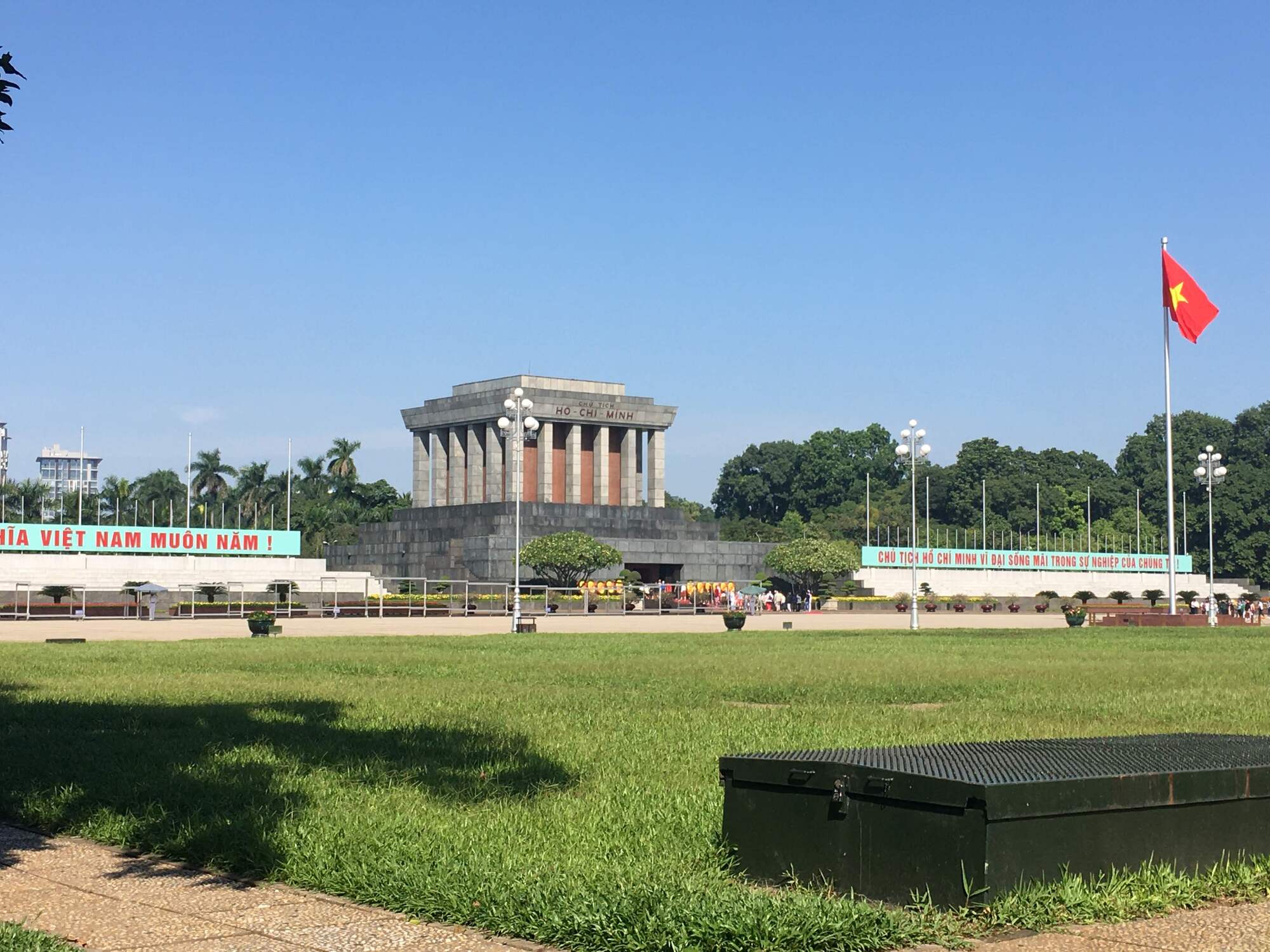
After getting outside again you can spend the rest of your time walking in the park nearby and see the One Pillar Pagoda, a reconstructed, iconic small buddhist temple that was originally erected in 1049. Very long ago. It’s designed to resemble a lotus blossom.
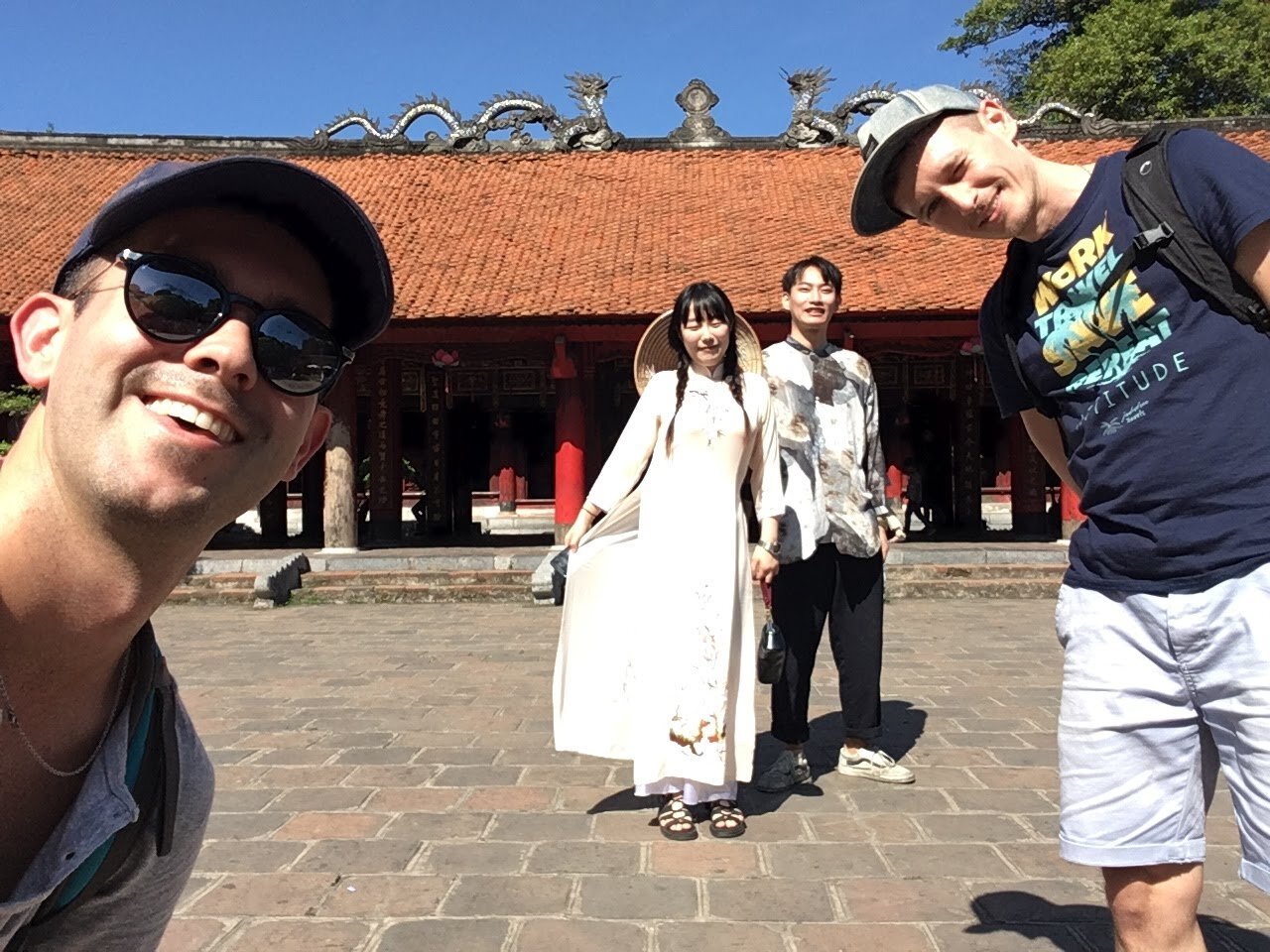 Photobombing a couple in a traditional outfit.
Photobombing a couple in a traditional outfit.
The Temple Of Literature
What I surprisingly enjoyed was the temple of literature just south of the mausoleum. It’s a Confucian temple dedicated to Confucius himself, sages and scholars, and consists of landscaped courtyards, altars and shrines, and an imposing front gate. It was a pleasure walking around there with my two backpacker friends and getting lost within the walls of this very long, spacious complex of ancient buildings that were originally built in 1070. Very old indeed.
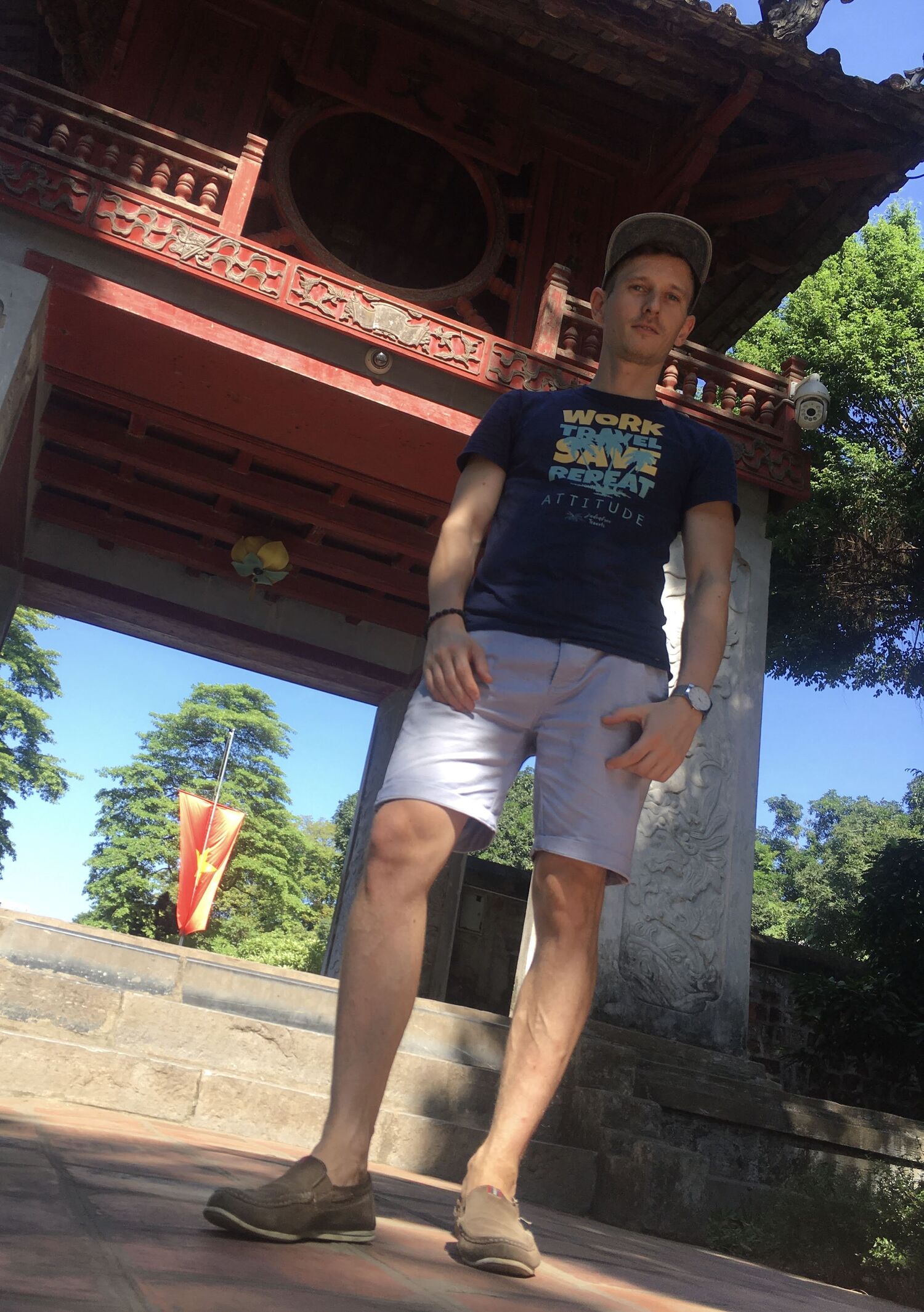 At the entrance to the temple.
At the entrance to the temple.
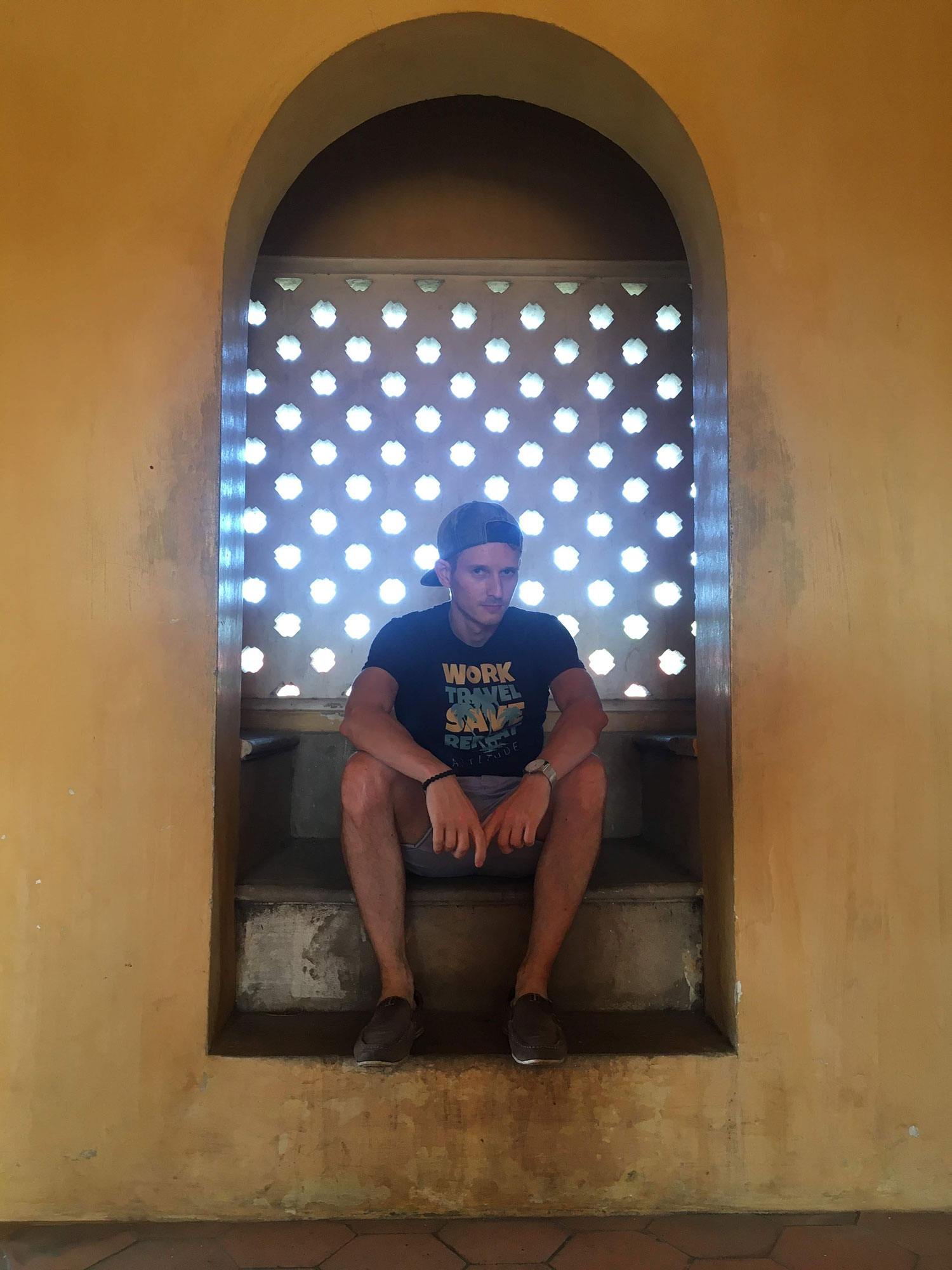 Inside the citadel complex.
Inside the citadel complex.
Imperial Citadel
Between the governmental district with the mausoleum and the Old Quarter you can make your way to the Thăng Long Imperial citadel complex with 11th-century buildings and sculptures and from there to Kinh Thien, a historic fort and former royal residence.
The royal enclosure was first built in 1010 and subsequently expanded by the subsequent 2 royal dynasties. It remained the seat of the Vietnamese court until 1810, when the Nguyễn dynasty chose to move the capital to Huế. The ruins roughly coincide with the Hanoi Citadel today and it was fun to walk around there and take some pictures with the two friends I met there.
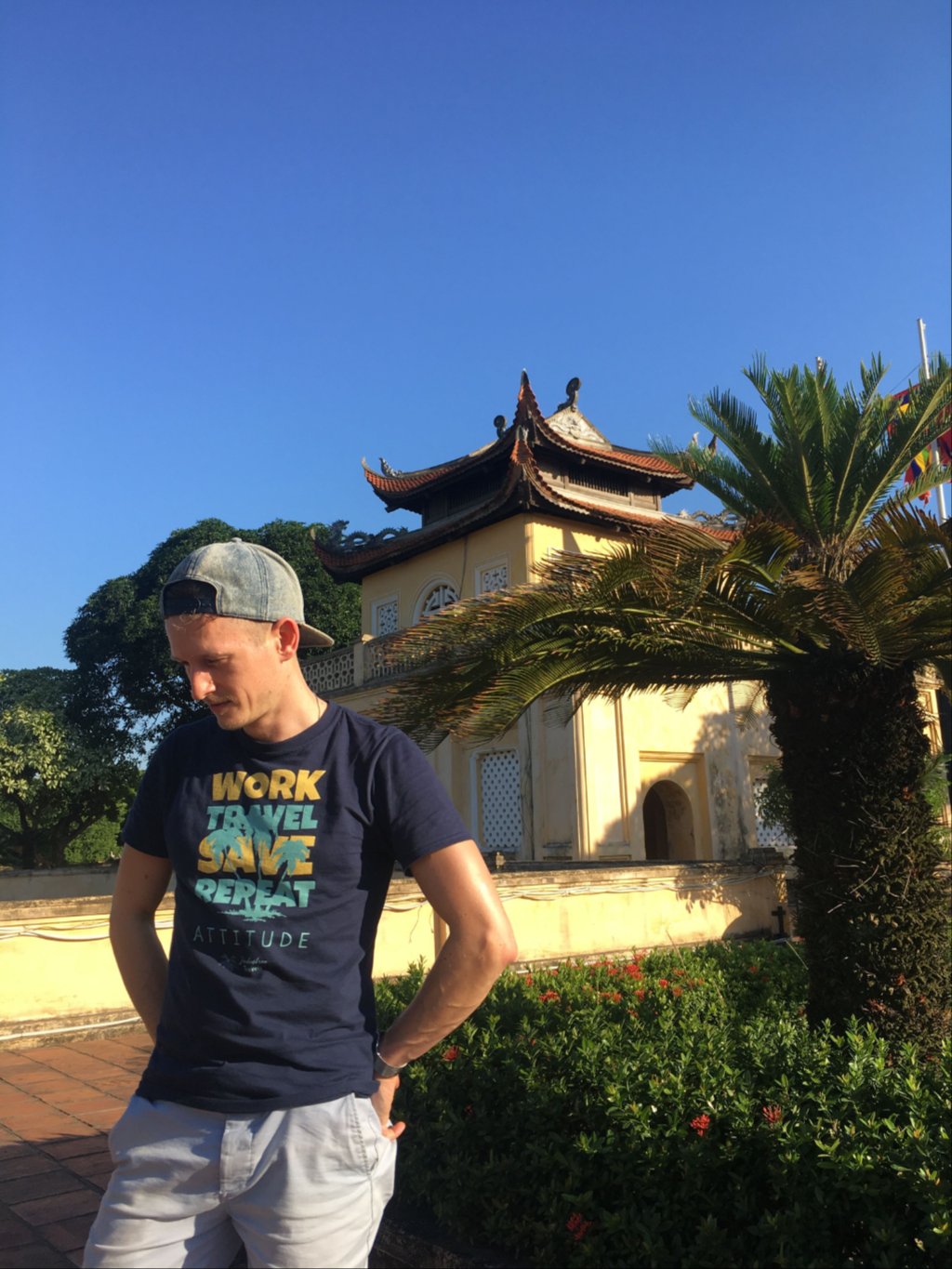 Posing in front of a citadel tower.
Posing in front of a citadel tower.



